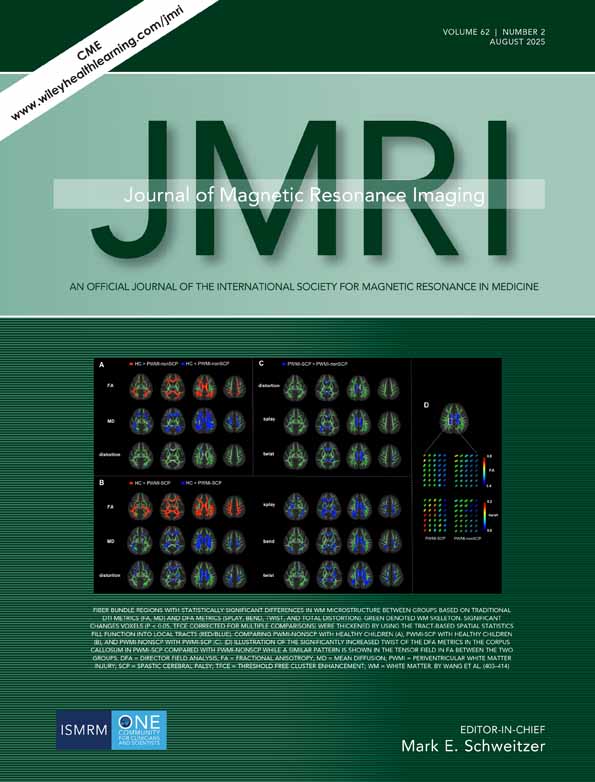Assessing normal pulse wave velocity in the proximal pulmonary arteries using transit time: A feasibility, repeatability, and observer reproducibility study by cardiovascular magnetic resonance
Abstract
Purpose
To calculate pulse wave velocity (PWV) in the proximal pulmonary arteries (PAs) by cardiovascular magnetic resonance (CMR) using the transit-time method, and address respiratory variation, repeatability, and observer reproducibility.
Materials and Methods
A 1.9-msec interleaved phase velocity sequence was repeated three times consecutively in 10 normal subjects. Pulse wave (PW) arrival times (ATs) were determined for the main and branch PAs. The PWV was calculated by dividing the path length traveled by the difference in ATs. Respiratory variation was considered by comparing acquisitions with and without respiratory gating.
Results
For navigated data the mean PWVs for the left PA (LPA) and right PA (RPA) were 2.09 ± 0.64 m/second and 2.33 ± 0.44 m/second, respectively. For non-navigated data the mean PWVs for the LPA and RPA were 2.14 ± 0.41 m/second and 2.31 ± 0.49 m/second, respectively. No statistically significant difference was found between respiratory non-navigated data and navigated data. Repeated on-table measurements were consistent (LPA non-navigated P = 0.95, RPA non-navigated P = 0.91, LPA navigated P = 0.96, RPA navigated P = 0.51). The coefficients of variation (CVs) were 12.2% and 12.5% for intra- and interobserver assessments, respectively.
Conclusion
One can measure PWV in the proximal PAs using transit-time in a reproducible manner without respiratory gating. J. Magn. Reson. Imaging 2007;25:974–981. © 2007 Wiley-Liss, Inc.




